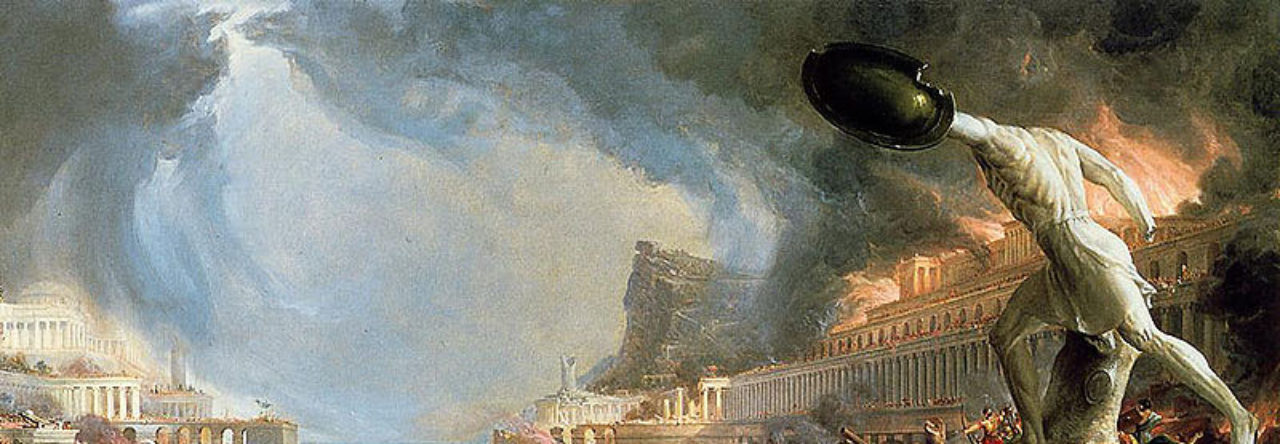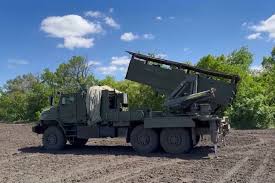Week-end Wrap – Political Economy – June 29, 2025
by Tony Wikrent
Remembering Bill Moyers: A Colossus of Journalism and Public Service
Jonathan Alter, June 28, 2025 [Washington Monthly]
‘We Have Lost a Giant’: Broadcast Legend Bill Moyers Dies at 91
Jessica Corbett, June 26, 2025 [CommonDreams]
Free Press Mourns Bill Moyers
[Free Press, June 26 2025, via CommonDreams]
The (anti)Federalist Society assault on the Constitution
Amy Coney Barrett and the Supreme Court Give Birth to a Disaster
Garrett Epps, June 27, 2025 [Washington Monthly]
…Three federal district courts concluded that the birthright citizenship order is almost certainly unconstitutional and barred the executive branch from enforcing it pending a final decision. The issue seemed headed to the Supreme Court, where it would be decided in the normal course of American law.
The administration, however, did an end run around that process. It filed an application with the Supreme Court that denied any interest in the issue of the order’s constitutionality. Instead, it said, it wanted the Court to look at whether district courts can tell the president he can’t do something he wants to do—to issue “universal injunctions” barring the government from, for example, stripping citizenship from any baby until the constitutionality of the order can be settled. The two things, the government suggested, have nothing to do with each other….
The Supreme Court Just Gave Trump Three Victories in One Ruling
Matt Ford, June 27, 2025 [The New Republic]
The Supreme Court’s ruling on Friday in Trump v. CASA is a disastrous moment for the American constitutional order. In a 6–3 decision, the court’s conservative justices curbed the judiciary’s power to prevent the executive branch from carrying out blatantly unconstitutional policies and orders.
The court effectively granted Trump three major victories in one stroke. First, the ruling severely narrowed federal judges’ power to temporarily halt the Trump administration’s actions in general, freeing the president from a major constraint on his policy agenda.
In response to lawsuits, lower courts had often issued what are known as “nationwide injunctions,” which blocked the executive branch from enacting a new policy while litigation continued in court. Those injunctions typically applied beyond the plaintiffs in a particular case. But Justice Amy Coney Barrett, writing for the court, held that courts had acted unlawfully by granting relief to anyone beyond the plaintiffs themselves….
The Real Judicial Coup: How the Supreme Court Just Redefined Presidential Authority
Mike Brock, June 27, 2025 [Notes From The Circus]
…Justice Amy Coney Barrett, writing for the majority, has created what amounts to a doctrine of presumptive executive constitutionality. The Court ruled that when a president issues an order that appears to violate the Constitution, courts must assume the president is correct until proven wrong—not once, but individually, circuit by circuit, plaintiff by plaintiff.
Let’s be absolutely clear about what this means: the Supreme Court has ruled that birthright citizenship—guaranteed by the plain text of the 14th Amendment—can be suspended nationwide based solely on a president’s claim of authority, and anyone who wants their constitutional rights restored must file individual lawsuits seeking individual relief.
This isn’t judicial restraint. This is a fundamental rewriting of how constitutional rights work in America….
This represents a systematic advantage for executive power over constitutional constraint through procedural manipulation. It’s not that rights disappear—it’s that protecting them becomes exponentially more difficult and expensive….
“No Right Is Safe”: SCOTUS Bars Judges From Reining in Trump
Shawn Musgrave, June 27 2025 [The Intercept]
The Supreme Court halted courts from issuing national injunctions, forcing “judges to shrug and turn their backs to intermittent lawlessness.”
By Limiting Nationwide Injunctions, Supreme Court Declares ‘Open Season on All Our Rights’
Jessica Corbett, June 27, 2025 [CommonDreams]
In a ruling that stems from the president’s birthright citizenship order, the “conservative supermajority just took away lower courts’ single most powerful tool for reining in the Trump administration’s lawless excesses.”
It’s Not Just a Constitutional Crisis in the Trump Era. It’s Constitutional Failure
Jack Rakove, June 27, 2025
[TW: Rakove is a leading scholar of the creation of the American republic. His 1996 book Original Meanings: Politics and Ideas in the Making of the Constitution dismantled many of the claims of the Constitutional originalism of conservatives, and was awarded the 1997 Pulitzer Prize for History.]
…Our ongoing constitutional crisis began with the presidential election last November 5. Reelecting an individual culpable for January 6 who has twice made a mockery of the presidential oath of office is itself a constitutional crisis. Nothing in his past or current behavior suggests that Trump has ever felt fidelity to his constitutional duties.
Once a constitutional crisis becomes an endemic condition, the term no longer usefully describes our collapsing system. Instead, we live in an era of constitutional failure when the relevant institutions cannot fulfill their responsibilities….
…When audiences at constituent meetings repeatedly shout, “Do your jobs,” they have a better grasp of Congress’s responsibility than their feckless representatives….
In the face of this congressional passivity, what path of constitutional repair is left open? Unsurprisingly, the best answer remains the courts. Although it has taken time to respond to the turmoil Trump has unleashed, the judiciary’s actions have been encouraging. Remarkably, the difference between Republican and Democratic-appointed judges has been slight, suggesting that judicial independence enshrined in Article III may be fulfilled amid this grave situation.
Yet, with the current Supreme Court, one cannot be too confident. Why? Its responses to the two 2024 critical election cases remain deeply troubling to anyone who takes the injunctions of the Constitution seriously. The Court handled one case with striking expedition. But it manifestly stalled the other with a run-out-the-clock set of procedural delays that deprived voters of findings they were entitled to possess before November 5. The decisions in Trump v. Anderson (which involved the application of Section 3 of the Fourteenth Amendment to Trump’s eligibility to appear on the Colorado primary ballot) and Trump v. U.S. (the presidential immunity case) should sit atop any hit list of constitutional failures….
…The second condition seems more surprising. It is the stunning inadequacy of the majority’s understanding of constitutional history and core concepts of American constitutionalism….
In our fractious polity, fresh insults to constitutional norms and settled practices of governance occur daily. That is why the phrase constitutional crisis no longer describes our situation. The Constitution has failed, and we no longer know which institution will rescue it.
Sotomayor joined by Jackson, Kagan on fiery birthright citizenship dissent
[The Hill, via Naked Capitalism 06-28-2025]
Trump not violating any law
‘He who saves his Country does not violate any Law’
Trump Stuns By Saying ‘I Don’t Know’ When Asked Directly NBC’s Kristen Welker ‘Don’t You Need to Uphold the Constitution?’
Joe DePaolo, May 4th, 2025 [mediaite.com]
Trump’s ICE Agents Are Arresting US Citizens. GOP Budget Would Hire 10,000 More.
[Truthout, via Naked Capitalism 06-24-2025]
Trump’s secret police are terrorizing American streets: The altercations are growing more tense — especially in Los Angeles.
Justin Glawe, June 27, 2025 [Public Notice]
Militarized LA: troops here to stay as Trump doubles down on deployments
[The Guardian, via Naked Capitalism 06-24-2025]
Justice Dept. whistleblower details senior officials’ efforts to stonewall judges, ignore decisions
[CBS News, via Naked Capitalism 06-26-2025]
How To Talk To Your Senators About Emil Bove
Joyce Vance, June 25, 2025 [Civil Discourse]
Meet the D.C. Bigwigs Literally Profiting Off Trump’s Deportations
[The Bulwark, via Naked Capitalism 06-26-2025]
Strategic Political Economy
Solving America’s Chip Manufacturing Crisis
Kenneth Flamm and William B. Bonvillian
American Affairs Volume IX, Number 2 (Summer 2025): 41–68.
[TW: Flamm documented the origins of the U.S. computer industry in his 1998 book, Creating the Computer: government, industry, and high technology, published by the Brookings Institution and available in full online. This book should be required reading for all courses of study in economics and American history because it devastates the myth of “entrepreneurial free enterprise” by showing how it was carefully created and targeted U.S. government programs and funding which allowed the risky new technologies required for computers to reach commercial success and create an entire, new industry. This new article is long and brimming with technical industrial information very few people have mastered, making it an extremely important and informative read. ]
…Economies of scale are the fundamental economic force reshaping industrial structure in leading-edge chip fabrication. For context, note that at the peak of its market power in the global computer processor (CPU) market in the third quarter of 2014, Intel alone produced a record 100 million x86 processors (x86 is Intel’s famous foundational architecture and instruction set for computer processors), implying an annual Intel production rate of somewhere between 300 and 400 million processors….
Intel’s current problems are in part linked to the relentless increase in fabrication equipment costs at every new technology node as well as to the increasing volume of production needed to reach minimum efficient scale at the new nodes. In 2014, Intel’s dominant market position gave it massive volume that was produced at multiple Intel fabs (using the “copy exactly” strategy Intel invented in the 1980s). But by 2023, Intel’s annual x86 processor volumes appear to have dropped 30–50 percent, to 190–230 million sold annually….
…in the early 2000s, Intel began to stray from the vision of its legendary early leaders Robert Noyce, Gordon Moore, and Andy Grove, who focused on fielding the most technically advanced, complex, and capable products on the market.… The connection to Intel’s current woes is that the first decade of the twenty-first century was a distracting one for Intel management. The firm’s resources and managerial attention were diverted into sales and marketing initiatives aimed at defending an entrenched position of market power. The company had lost its singular focus on technical innovation that had been its hallmark under Noyce, Moore, and Grove’s early vision for Intel….
Intel Foundry is not really a case of “too big to fail”; it is a case of “too intertwined with national security to fail.” There are no other U.S. company alternatives to Intel Foundry: the capital costs of entering advanced chip manufacturing, R&D, and production are staggering, the technology challenges and risks are massive, and all of Intel’s former U.S. competitors have by now exited advanced chipmaking. The national security imperative requires that the U.S. government backstop Intel Foundry,…
In addition to the task of supporting Intel Foundry’s commercial success, there is a longer-term financing task.58 The chips Act is a stopgap measure. It assures some production in the United States of the pending generation of advanced chip processes, but not the following generations of chips.59 It was a onetime law with the authorization running out, as noted, in 2027; and the funding for new fab construction is already committed. The U.S. semiconductor challenge is a long-term one, and CHIPS was an important but decidedly short-term fix….
…Because the federal government refused to engage in a subsidy competition to finance the massive costs of new semiconductor fabs, no new leading-edge logic fabs had been built in the United States for over a decade, and no new leading-edge memory fabs for roughly two decades, before the chips Act.80 Congress passed the chips Act in recognition of this major security vulnerability.
But the chips Act is only authorized for five years, expiring in 2027, and it is not at all clear that it will be renewed….
Congress Is Pushing for a Medicaid Work Requirement. Here’s What Happened When Georgia Tried It.
[ProPublica, via Naked Capitalism 06-27-2025]
…Georgia, the only state with a Medicaid work mandate, started experimenting with the requirement on July 1, 2023. As the Medicaid program’s two-year anniversary approaches, Georgia has enrolled just a fraction of those eligible, a result health policy researchers largely attribute to bureaucratic hurdles in the state’s work verification system. As of May 2025, approximately 7,500 of the nearly 250,000 eligible Georgians were enrolled, even though state statistics show 64% of that group is working.
Read More










